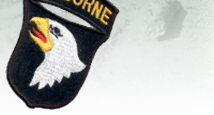Arthur Hopper, Glider pilot in the 72nd Squadron of the 434th Troop Carrier Group
I had received my training as a Glider pilot in the States prior to the invasion.
We were part of the (US Army) Air Force.
This was unlike British Glider pilots that where part of the Airborne divisions.
Our training, involved flying light planes. We shut the motor off in mid air and practiced dead stick landings.
In later times we practiced glider flights in German Swicher sailplanes in the desert of California near the 29 Palms area.
After seven months of flight school training we eventually received the CG4A cargo gliders with which we had to land in combat.
We trained with the CG4A's in Victorville California. After flight school we were assigned to the Special Airborne unit for Combat Glider Landings training at Ft Bragg North Carolina.
We trained with the 82nd Airborne Division. Col. Mike Murphy was our commander. He flew the lead glider into France on D Day.
After our training at Fort Bragg had ended I was assigned to my Troop Carrier Group and received addition training with the group for about 6 or 7 months.
We were shipped to England about Oct 1943. In England Combat Flight training continued with and without airborne troops.
I also learned to fly the British Glider Horsa. All in all I considered my flight training good both US and in England.
We glider Pilots could have used better combat ground training, but being Air Force men it wasn't surprising that it was somewhat limited.
I was the pilot in Glider #7 that took some 101st glider troops in France near St Mere Eglise landing about 5 AM on 6/6/44.
We experienced flake and ground fire in our flight to France. We also experienced some fog and cloud cover. In spite of this we managed to land about 2 miles from the expected landing area, which was not to bad for us.
We landed in field that had been flooded. This was something we hadn't expected. Our load was a Jeep, four troopers and radio equipment. We were unable to get the jeep out after the landing due to the flooded field. We stayed off roadways until after first light. We stayed in the hedgerows for cover. We were met with lots of small arms fire early on in the night. It was only after several hours that we were able to join up with other troops. I was able to join up with several other glider pilots from our group. We arrived in St Mere Eglise around 4 PM on D Day. By that time the town was in Allied hands. We came under attack that evening when the Germans tried to retake the area without success! On D-day+2 I took German prisoners back to the Utah beach area along with other glider pilots. We stayed on beach that night and the next day we started our journey back to England on LST boats with the wounded.
As glider pilots was it our objective to get troops and or equipment on the ground and than get back to the main sea landing area as soon as possible, to perhaps go on another airborne effort.
© normandy44
Art's Market Garden mission
<< BACK HOME
|
